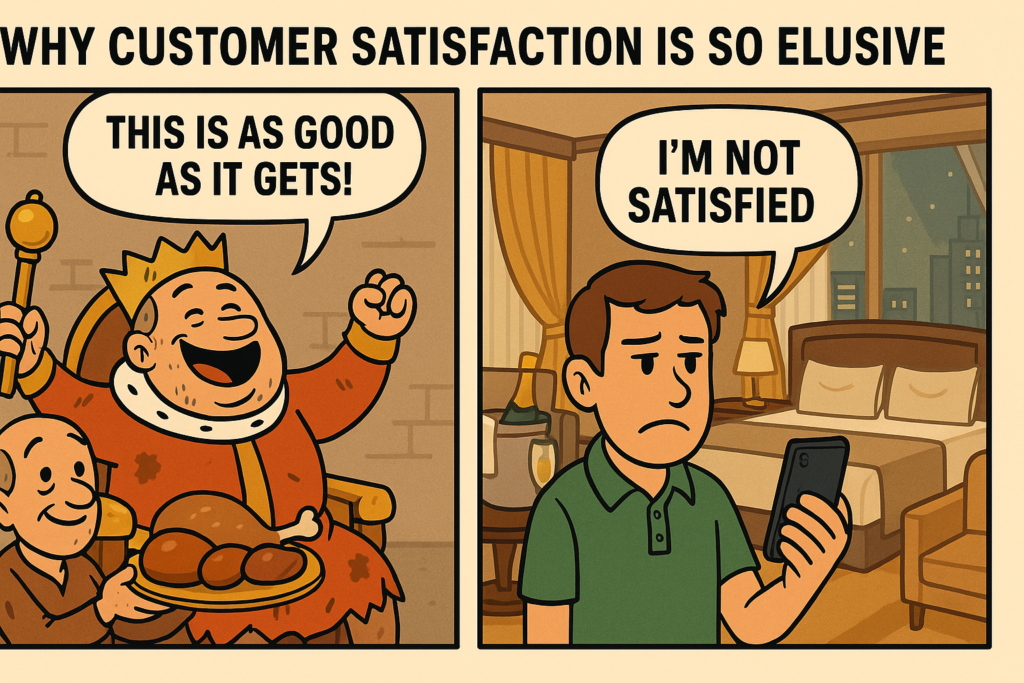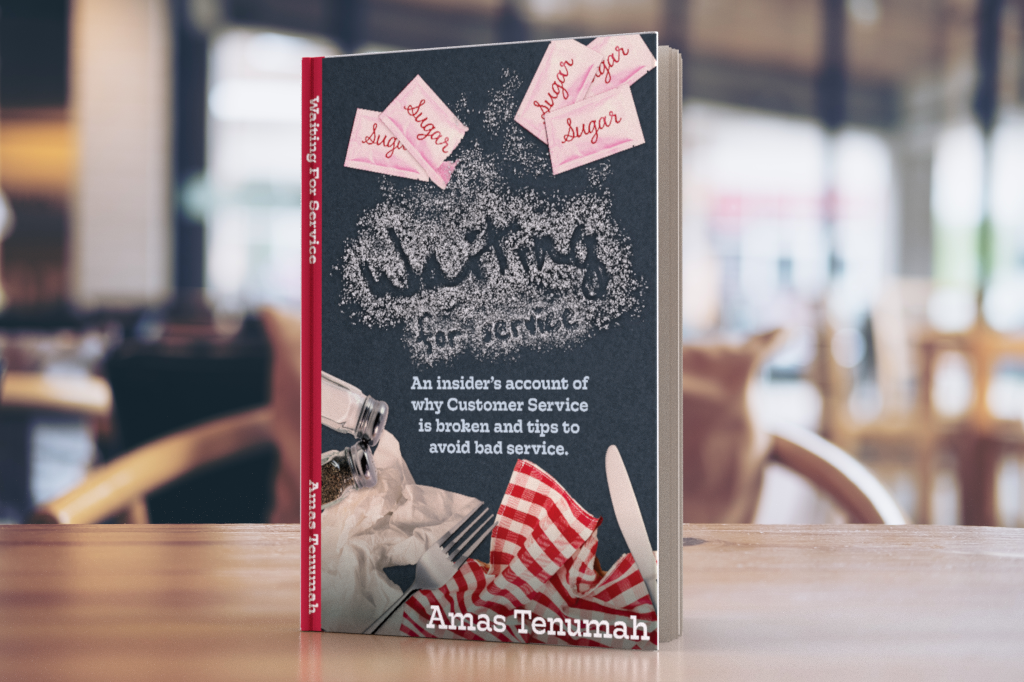Would you rather be a king 500 years ago or a middle-class suburbanite with a Costco membership and decent Wi-Fi?
This is more than a weird icebreaker—it’s a window into how you understand satisfaction. If you think it’s all about objective reality—access to antibiotics, central heating, and being able to DoorDash a burrito at 2am—you’ll probably pick middle class today. If you think satisfaction is relative—as in, “how did this stack up to what I expected?”—then King Henry VIII starts looking pretty happy with his leg of mutton and complete lack of indoor plumbing.
Here’s the kicker: by nearly every measure, life today is better. And yet, we are whinier. More annoyed. Quicker to fire off a one-star review because the artisanal oat milk wasn’t “frothy enough.”
Why? Because our brains are jerks.
We are biologically programmed to immediately raise our expectations the second things get better. We’re like cats—give us something nice, and we’ll act like we deserved it all along and now demand more.
“We become happy when reality matches our expectations.” – Yuval Harari (Translation: You’re not miserable because things are bad. You’re miserable because they’re not better than you imagined.)
In customer experience, this is the formula: Customer Satisfaction = Reality ≥ Expectations (And unfortunately, expectations now come with a marketing team, a TikTok influencer, and a drone light show.)
A local agency got on the news to brag that they’d reduced average wait times from three hours to one. People were thrilled. Why? Because they expected to die of old age in that waiting room. Instead, they got out in time for lunch. That’s not “efficient bureaucracy,” that’s magic. Their customer satisfaction scores soared.
Now compare that with a luxury hotel brand where I once delivered a brutally honest customer assessment to a room full of tense execs. The Head of Guest Services—absolutely fuming—said, “They’re probably writing these sh*tty reviews from the golden toilets in their suites.” I calmly flipped to a page in the report and read:
“I was promised opulence fit for royalty and was underwhelmed.”
The real issue wasn’t the golden toilet—it was the marketing that promised guests they’d get to live like Beyoncé for a weekend.
And that’s the trap. Your actual biggest obstacle to customer satisfaction? It might not be operations. It might not even be your product. It’s your own marketing team, out there launching cinematic ad campaigns promising life-changing bliss, while you’re just trying to get towels delivered to the right floor and answer phone calls within twenty minutes.
And let’s not forget that expectations aren’t just shaped by you. They’re shaped by everyone. My teenage son was thrilled when I surprised him with a one-year-old Nissan for his 16th birthday. He was the happiest kid on earth… for three hours. Then he found out his best friend got a brand-new car with Bluetooth-everything and a button that probably makes pancakes. Suddenly, I was the villain in his coming-of-age story.
Customer satisfaction isn’t a checklist. It’s an emotional rollercoaster, driven by expectations you often don’t control and definitely can’t predict.
So if you’re in the business of keeping customers happy, remember: you’re not just delivering a product or a service—you’re wrestling with the ghost of promises made by your CMO, your competitors, and that one friend who never shuts up about how amazing their last experience was.
That’s it for now.
♻️Repost and follow Amas Tenumah .
********************************************************************************************
I am on a mission to fix customer service, if you want to join me head to waitingforservice.com.


